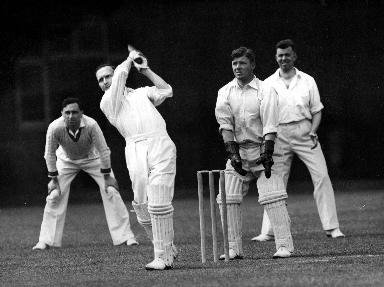Quiz Answer Key and Fun Facts
1. Geoffrey Boycott, the 23-year-old miner's son from Fitzwilliam, made his England debut in 1964 at Trent Bridge, Nottingham. Who were the opposition?
2. Who was Boycott's Test captain on his first two full overseas tours for England?
3. Both in South Africa in 1964-65 and again in Australia in 1965-66 Boycott shared some first-rate Test opening stands with Warwickshire's free-scoring Bob Barber, most memorably at Sydney Cricket Ground in the Third Test. England won this Test by an innings - Barber stroked a glorious 185 while Boycott, allowing his partner free rein, himself made what score?
4. In the First Test against India at Headingley, Leeds, in 1967 Boycott scored 246 not out - his highest Test score. What happened to him before the Second Test started at Lord's?
5. At Port of Spain, Trinidad, in March 1968, West Indies captain Garfield Sobers suddenly declared his second innings closed at 92-2 on the final day, sportingly (or perhaps rashly) setting England a target of 214 that looked gettable, on paper at least. What happened next?
6. Which swashbuckling, 17-stone Durham-born Northamptonshire player put on an exhilarating 132 with Boycott for the second wicket against Australia at Lord's, North London, in the summer of 1968?
7. Which one of these things did Boycott *not* do during the English summer of 1969?
8. Boycott had a magnificent tour of Australia in 1970-71, during which Raymond Illingworth's side regained the Ashes after a very long time without them (England had lost the Ashes in 1958-59). His only on-field blemish was when he briefly lost his cool on the pitch at Adelaide Oval, after being controversially given out for 58. What kind of dismissal was it?
9. Australia 1970-71: a famous anecdote about Boycott dates from this tour. He was batting with Basil d'Oliveira, when the South African-born all-rounder approached him in excitement at the end of an over and announced that he had discovered an effective method of playing Australia's unorthodox leg-spinner John Gleeson, who had been tormenting England's other batsmen since the tour began. What is Boycott said to have replied?
10. What was Boycott's highest score in his very successful Ashes series of 1970-71?
Source: Author
londoneye98
This quiz was reviewed by FunTrivia editor
gtho4 before going online.
Any errors found in FunTrivia content are routinely corrected through our feedback system.
